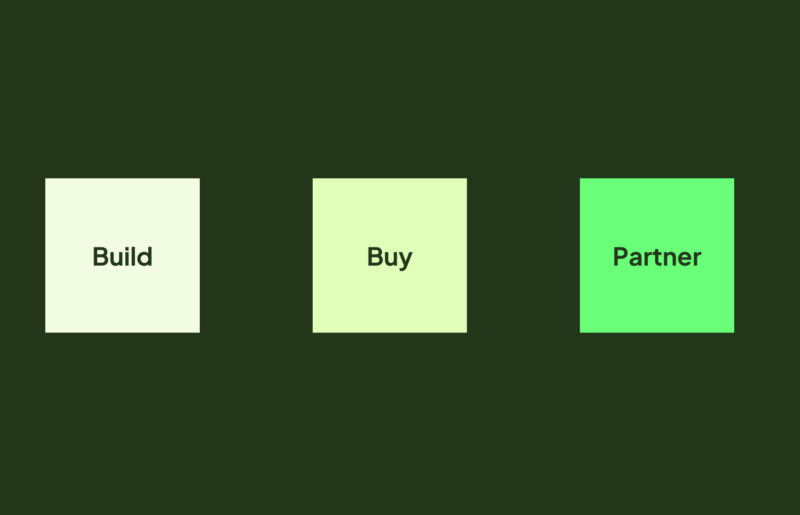Chapter 1
As a seasoned explorer in the rapidly charting landscape of AI, I find myself fascinated by the unfolding narratives of its myriad applications. Yet, even within this panorama of innovation, Retrieval-Augmented Generation stands out as particularly awe-inspiring. To truly capture its essence, we must first embark on a historical journey through AI’s evolution.
I remember how it all began with the rule-based systems – our initial strides into the separate realms of AI and Machine Learning. Back then, the dependence on explicitly programmed rules and deterministic logic was overwhelming. The systems were limited, their abilities fenced within the boundaries of what was explicitly programmed into them. It was a rudimentary beginning, but an essential one, clearing the path for the transformations yet to come.
As learning algorithms evolved, fascinated, I watched them transition from being purely rule-based to exploiting statistical methods and probabilistic models. Soon, Deep Learning materialized with its multilayered neural networks that mirrored the human brain’s workings. No longer did machine learning algorithms simply act based on a set of rules; now, they began learning from patterns and data, getting better with each interaction.
In this transition, I witnessed a metamorphosis, a paradigm shift that drastically enhanced AI’s capabilities. Text generation, for instance, took a giant leap forward. Where earlier systems offered absolute, deterministic responses, Deep Learning-based Natural Language Processing brought in variation, richness, and a human-like flavor to the machine-generated text.

Yet, as we moved beyond text generation into an era of deeper understanding, RAG came into the picture, brimming with potential. Think of RAG, Retrieval-Augmented Generation, as an exquisite blend of past and present AI techniques, and you begin to grasp the magnitude of its significance. It’s the cusp where the best of retrieval-based and generative methods come together, promising advancements that I hadn’t thought possible.
The promise of RAG lies embedded in its nomenclature. It augments the generative process of text by retrieving relevant information from an extensive knowledge base. This is a critical distinction from traditional models, which lacked the capability to access or utilize external databases during the generative phase, confining their abilities within the boundaries of pre-existing knowledge.
As I explore RAG deeper, I get lost in the myriad possibilities it unravels. From revolutionizing the way chatbots interact with human users to more complex applications in digital assistants, news generation, and even in AI tutoring systems, the range is limitless. No longer are AI applications bound by their initial training data or restricted to high-level approximations. With RAG, they can now dive into the ocean of information that is the World Wide Web and pull out pearls of wisdom from an enormous and ever-expanding database.
So here I am, poised on the brink of this new era of AI, ready to dive deeper into Retrieval-Augmented Generation, eagerly anticipating the advanced AI and NLP applications that will change our interaction with machines. Let’s begin this exploration, where past lessons and future promises converge, for RAG is not just a new method in AI; it’s a vision for what AI could be and a direction for where it’s headed.
Definition and Basic Principles of RAG
As I delve into the world of AI, particularly in the realm of Natural Language Processing (NLP), I encounter an intriguing development called Retrieval-Augmented Generation, or RAG. This cutting-edge innovation merges two pivotal aspects of NLP: retrieval-based methods and seq2seq, or sequence-to-sequence, models. It poses a fascinating blend, one that leverages the advantages of both components to perform beyond the capabilities of traditional methods.

At its crux, RAG utilizes the robustness of retrieval-based systems that search through a vast database to find relevant text segments. It then fuses these segments with the flexibility and generative ability of seq2seq models, which enables the system to create meaningful and contextually appropriate responses, rather than merely parroting minted phrases from a pool of possibilities. Putting it simply, RAG builds upon the strength of existing models to create a feature-rich, contextual, and improvisational system that excels in generating intricate and novel text.
Historical Development and Evolution of RAG
The journey to Retrieval-Augmented Generation is one filled with progressive steps and significant milestones. I trace the roots back to the rise of retrieval-based models, systems that relied heavily on selecting the most fitting pregenerated responses from a database. These models were limited, restricted to the particular dataset they were fed, lacking the ability to create or adapt out of their predefined scope.
With the need to evolve, preeminent institutions and researchers spearheaded the introduction of seq2seq models. The pioneering concept of these was the novelty, the capacity to dynamically generate responses based on input and context. However, they weren’t without voids. Often, due to the very richness of language and nuances of meaning, these models would end up producing generic and less meaningful responses.
As a rectification and an evolution, RAG took the stage. It presented a solution to the limitations of both retrieval-based and seq2seq methods. By integrating the retrieval process into the seq2seq framework, it harnessed their strengths and mitigated their weaknesses. This innovative leap has opened up a new frontier, one where machines can not only ‘understand’ and ‘generate’ human language but also do so with enhanced relevancy and complexity.
In its current state, RAG is a testimony to AI’s progress, demonstrating its capacity to continually refine and develop. However, just like any progressive field, it is important to note that RAG is not an endgame but a stepping stone, a means to more sophisticated capabilities of AI and NLP applications in the future.
Comparison with Traditional AI Models
RAG’s distinction from archetypal AI models is worth noting. Rather than juggling between retrieval-based or seq2seq models, RAG harmoniously blends them into one unified framework. Traditional models often hit a wall when it came to complexity and relevancy — attributes intrinsically ingrained within human language. On the contrary, RAG manages to navigate these challenges with finesse. It transforms the stumbling blocks of richness and nuance inherent in language into stepping stones for a more refined and sophisticated generation of text.
Integration of RAG in Existing AI Systems
Today, we’re witnessing an industry-wide adoption of RAG. From customer service bots offering increasingly tailored responses to recommendation algorithms producing more personalized suggestions, RAG’s footprint is undeniably growing. It’s being integrated into AI systems, plugging the gaps left by predecessor models and ramping up their performance to unprecedented levels. The rise of RAG signifies a key inflection point for AI, a hard push in the overarching trend towards systems that resonate more closely with human mannerisms and language. It’s a new chapter in AI’s journey, an era marked by machines that can do more than just speak—they can now carry a conversation.
Architecture and Components of RAG
When speaking of RAG, a conversation must be had about its architecture. In comparison to traditional models, RAG presents a unique and innovative design in which disparate AI models co-exist synergistically. This integration is no ordinary feat, it is the very nucleus of RAG’s superior ability to manage language complexity, making it outperform predecessors in a wide array of manners.

The architecture of RAG hinges on two core facets: a seq2seq model and a document retrieval component. Working holistically, they elevate the system’s proficiency in text generation. To elaborate, the retrieval component pore over countless documents, encapsulating a broad knowledge sphere aimed to find contextually relevant information. Simultaneously, the seq2seq model, fine-tuned to handle questions, contributes to the generation of more complex and nuanced responses.
The Role of NLP in RAG
Natural Language Processing (NLP) — another indispensable facet of RAG — has found itself amplified by this innovative framework. What was once a scattered and one-sided conversation has now transformed into a rich, two-way exchange, courtesy of cutting-edge NLP techniques coupled with RAG’s core functionalities.
RAG’s application enriches NLP techniques, allowing for a deeper, more sensitive understanding of language patterns and context drawn from diverse knowledge bases. With this amalgamation, NLP has shed its previous limitations, including restrictive dialogues and lack of text sophistication, progressing towards conversational AI that, dare to say, is increasingly human-like.
The relationship between RAG and NLP demonstrates a significant stride in AI system evolution. With each augmenting the capabilities of the other, they encapsulate a beacon of hope for robust, natural, and sophisticated AI communication.
Case Studies in Various Industries
Consider, for example, Jane, a customer service chatbot employed in a rapidly growing e-commerce website. Originally programmed to respond in pre-set phrases, Jane’s capabilities were notably enhanced with the integration of RAG. Now, instead of sticking to convoluted scripts, Jane can understand a customer’s query in their own words, analyze the semantic weight of the query, retrieve a contextually apt response from its vast database, and craft a personalized, human-like reply.

In the healthcare industry, we’re witnessing a similar transformation. Hospitals are deploying AI-driven, RAG-powered digital assistants capable of decoding patient symptoms described in natural language, comparing them with millions of medical cases in real-time, and generating a likely diagnosis. These intelligent systems aren’t merely providing a list of possibilities — they’re recognizing underlying patterns, making connections, and generating new medical insights.
Future Potential and Upcoming Trends
As RAG continues to make waves, its potential applications seem boundless. We can expect to see it fueling advancements in a multitude of sectors, from finance to education to transport, essentially any field where complex decision-making based on large data sets is required.
In journalism, for example, RAG could potentially be harnessed to sift through a massive trove of data, events, and reports, extract critical facts and generate well-informed, unbiased, and contextually relevant news stories. Similarly, in the field of law, RAG-powered AI could facilitate legal research, synthesizing relevant case law and statutes to provide lawyers and paralegals with timely and accurate legal analysis.

Moreover, as we continue to build on the technological capabilities of RAG, we may witness the emergence of systems that can not only answer complex questions but anticipate them, thereby ensuring a smoother, more efficient human-AI interaction.
Nevertheless, the future of RAG is not just about what the technology can do; it’s about the ethical decisions that guide its development and implementation. It is crucial to consider potential misuses and work proactively to create safeguards and regulative measures that ensure technology acts as a force for good. The future is indeed exciting, but it takes conscious effort from all of us to ensure its potential is harnessed responsibly and ethically.
Technical and Ethical Challenges
As much as I luxuriate in the innovative aspects of Retrieval-Augmented Generation, believe me when I say, it is not devoid of challenges, both technical and ethical. Under the technical umbrella, two significant hurdles rank top: the lack of contextual understanding and the computer’s inability to explain its reasoning process – also known as the black box problem.
You see, while RAG can fetch information from a database to respond to queries, it sometimes falls short in understanding the nuanced meanings of sentences. This results in the system generating slightly ‘off’ responses, similar to when you misinterpret a colleague’s email.
From an ethical stance, concerns primarily point towards the risk of misuse. Given unrestricted access, RAG can generate text that might be malicious or spread disinformation. You can picture this as an advanced, text-generating system in the wrong hands, creating havoc on internet platforms.
Addressing the Limitations
Indeed, these limitations may sound daunting, but fret not—researchers are tirelessly transcending these barriers.
To ameliorate the lack of context problem, efforts are being put into Function Approximation Techniques such as deep learning techniques. These aim at teaching the system to understand semantics better, akin to how a newbie on a team learns how to decode office jargon.
Hardcoding transparent algorithms is another key approach aimed at softening the black box problem. Just like explaining to a curious kid how the TV works, these algorithms aim to elucidate the decisions made by the AI.
For the mitigation of ethical risks, we are proposing two primary routes: First, bolstering our systems with strong regulation policies for AI usage—making clear what is and isn’t permissible. Secondly, we’re focusing on the Alert User Models that will inform users about the possibilities of AI text generation misuse.
I can say, from my standpoint, the goal is to ensure that Retrieval-Augmented Generation learns to improve and that the power vested in it does not become a bane in the digital society. We’re not just developing groundbreaking technology; we are exploring the unknown like a curious explorer might, not letting stumbling blocks deter us but seeing them instead as opportunities to learn, improve and ultimately, revolutionize the AI and NLP landscapes.
As I delve deeper into the complex mechanics of the Retrieval-Augmented Generation (RAG), I can’t help but be mesmerized by its highly nuanced technical process. It pushes beyond traditional text generation limitations through a modular marriage of pre-trained neural retriever and seq2seq models. What truly astounds me is its unique ability to create a fusion of extracted documents encased in an evaluable probability distribution. This paves the way to a rich reservoir of information which significantly contributes to higher machine comprehension and response generation abilities.
To exemplify, let’s contemplate this scenario: An AI powered chatbot deployed in a customer care center. Prior to the advent of RAG, most of the dialogue responses were memorized or they were leveraging a simple generation mechanism. With the advent of RAG, it can conveniently pluck the most relevant pieces of information from a seemingly infinite database of solutions for the issues faced by customers.
It’s like AI has gained its own reference library, one it can immediately extract the most up-to-date and pertinent information from, making it incredibly efficient and more human-like. This complex problem-solving capability that RAG introduces is just a glimpse into the vast implications it has for Natural Language Processing (NLP).

RAG isn’t simply servicing practical applications. It’s also contributing heavily to Artificial Intelligence (AI) research. The results derived from experiments with RAG show a considerable increase in efficiency in information extraction, in comparison to the traditional sequence-to-sequence methods. They demonstrate that integrating the document retrieval into the seq2seq process augments the overall model’s performance.
Yet, as much as I want to emphasize the significance of RAG, it is equally crucial to mention that this is just the beginning. The field of AI and NLP continue to advance rapidly, with RAG potentially acting as a cornerstone in pushing the boundaries of what’s possible.
It’s an exciting time to be involved in AI research, and I implore you to dive deeper. There are avenues yet to be explored, concepts yet to be fully understood. The future of NLP and AI applications is here, and it goes beyond simple text generation. It goes to places where the intersection of data retrieval and generation defines a new era. That, my fellow AI adventurists, is the truly thrilling part of RAG. So let’s delve further and write the next chapter together.
For more information about Robertson Price, please click here.
For more information about RAGU, please click here.









